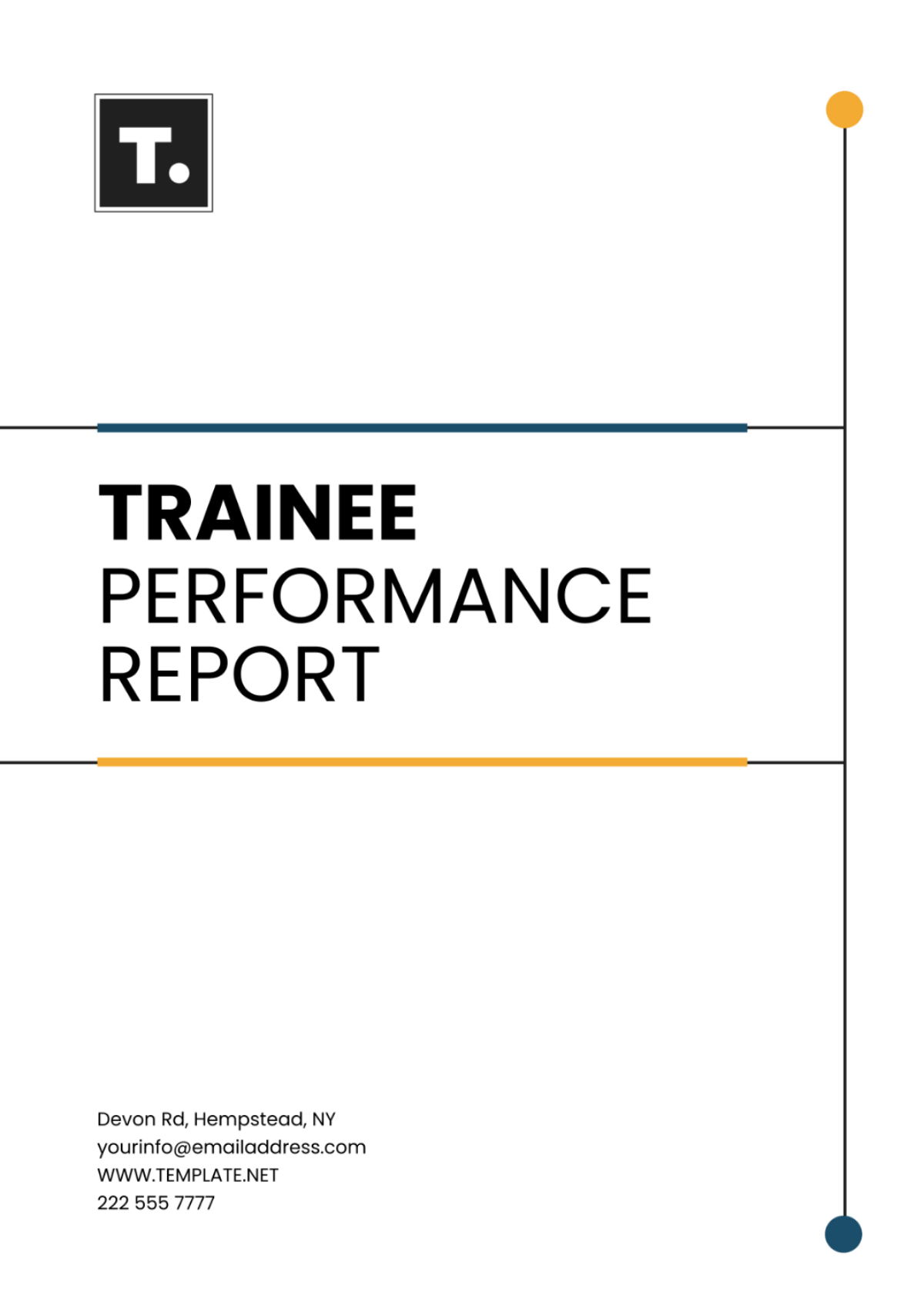Health and Safety Training Report Design
Prepared by: [Your Name]
Company: [Your Company Name]
Date: 6th December 2050
1. Introduction
This report outlines the comprehensive health and safety training programs conducted within our organization. These training sessions are designed to promote a culture of safety, ensure compliance with health and safety regulations, and empower employees to recognize, avoid, and respond to workplace hazards effectively. Through interactive and hands-on training, the program aims to minimize workplace accidents and enhance overall employee well-being.
2. Training Objectives
The primary objectives of the health and safety training program were as follows:
To increase employees’ understanding of workplace hazards and teach mitigation strategies.
To educate employees on emergency procedures, ensuring swift and effective responses in emergencies.
To ensure compliance with local and international health and safety regulations.
To foster a culture of safety and accountability across all departments and levels of the organization.
3. Training Methodology
The training program was designed using a blend of various learning approaches to ensure optimal knowledge transfer and employee engagement. These methodologies included:
Interactive Workshops – Facilitators used presentations and real-world examples to engage employees actively in identifying and mitigating hazards.
Hands-on Demonstrations – Practical sessions like fire drills and CPR practice allowed employees to experience real scenarios, reinforcing theoretical knowledge.
E-Learning Modules – In addition to in-person sessions, employees had access to online courses to review safety protocols at their convenience.
Group Discussions – Employees participated in group discussions to share experiences and solutions related to safety concerns in their specific roles.
4. Training Modules
Workplace Hazard Identification
This module equipped employees with the knowledge to identify and assess common workplace hazards, including physical, chemical, biological, and ergonomic risks. The session emphasized hazard prevention and mitigation techniques to avoid workplace injuries and accidents.Fire Safety and Emergency Procedures
Employees learned the proper procedures for responding to fire emergencies, including the correct use of fire extinguishers, evacuation routes, and emergency exits. Drills were conducted to simulate real-life fire emergencies, ensuring that employees could execute evacuation plans calmly and efficiently.First Aid and CPR
This module focused on first aid skills and life-saving techniques, such as CPR. Employees participated in practical sessions to familiarize themselves with treating injuries, applying bandages, and performing CPR, ensuring they could provide immediate medical assistance if needed.Personal Protective Equipment (PPE)
This module covered the proper selection, use, and maintenance of personal protective equipment. Employees learned to recognize the right PPE for specific tasks and the importance of using it consistently to reduce workplace injuries and illnesses.Manual Handling and Ergonomics
In this session, employees were taught correct manual handling techniques to reduce the risk of injuries caused by improper lifting and carrying. The training also included ergonomic principles to optimize workstation setup, thereby preventing long-term musculoskeletal disorders.
5. Training Schedule and Participation
Module | Date | Duration | Participants |
|---|---|---|---|
Workplace Hazard Identification | 5th January 2050 | 4 hours | 45 |
Fire Safety and Emergency Procedures | 12th January 2050 | 3 hours | 45 |
First Aid and CPR | 19th January 2050 | 5 hours | 30 |
Personal Protective Equipment | 26th January 2050 | 2 hours | 50 |
Manual Handling and Ergonomics | 2nd February 2050 | 3 hours | 50 |
6. Key Performance Indicators (KPIs)
To measure the success of the health and safety training, the following KPIs were established:
Employee Satisfaction Rate – Based on post-training feedback surveys, with a target satisfaction rate of 85% or higher.
Knowledge Retention – Measured through quizzes or tests administered before and after training sessions, with a target score improvement of 20%.
Incident Reduction – Tracking the number of workplace accidents reported post-training, with a target reduction of 15%.
Training Completion Rate – Ensuring 100% participation from all employees who were scheduled to attend the sessions.
7. Feedback and Evaluation
Post-training evaluations were conducted to assess the effectiveness and relevance of the program. The results were highly positive, with employees highlighting the following:
Strengths:
Engaging and informative training sessions.
Practical, hands-on experience that reinforced theoretical knowledge.
Experienced trainers who facilitated clear and interactive discussions.
Areas for Improvement:
More frequent sessions to reinforce knowledge retention.
Inclusion of additional case studies for practical application in real-world scenarios.
Enhanced follow-up training for refresher courses on critical safety practices.
8. Challenges Faced
Several challenges were encountered during the execution of the training program:
Scheduling Conflicts – Coordinating training schedules that aligned with operational demands was difficult due to shift work and employee availability.
Retention of Information – Some employees reported that while the training was helpful, retaining detailed procedures without regular refreshers was a challenge.
Resource Limitations – Limited access to certain types of PPE for demonstration purposes hindered the full execution of some modules.
9. Conclusion and Recommendations
The health and safety training program achieved its primary objectives and successfully equipped employees with the knowledge and skills necessary to respond effectively to hazards and emergencies. Based on the evaluations, we recommend the following:
Regular Follow-Up Training: Schedule biannual refresher courses to reinforce key safety procedures and ensure compliance with evolving regulations.
Incorporation of New Technologies: Update training materials to incorporate new safety technologies and practices, including digital tools for hazard identification and emergency response.
Training Expansion: Extend the program to include additional topics such as mental health awareness, stress management, and cybersecurity, given the evolving nature of workplace risks.
Safety Audits: Conduct regular safety audits and risk assessments to identify areas where further training is needed and ensure continuous improvement.
Increased Resources for Hands-on Training: Invest in additional resources, such as PPE and training simulators, to improve the effectiveness of practical components.
By adopting these recommendations, we can continue to build on the success of this program and further enhance workplace safety and employee well-being.















































